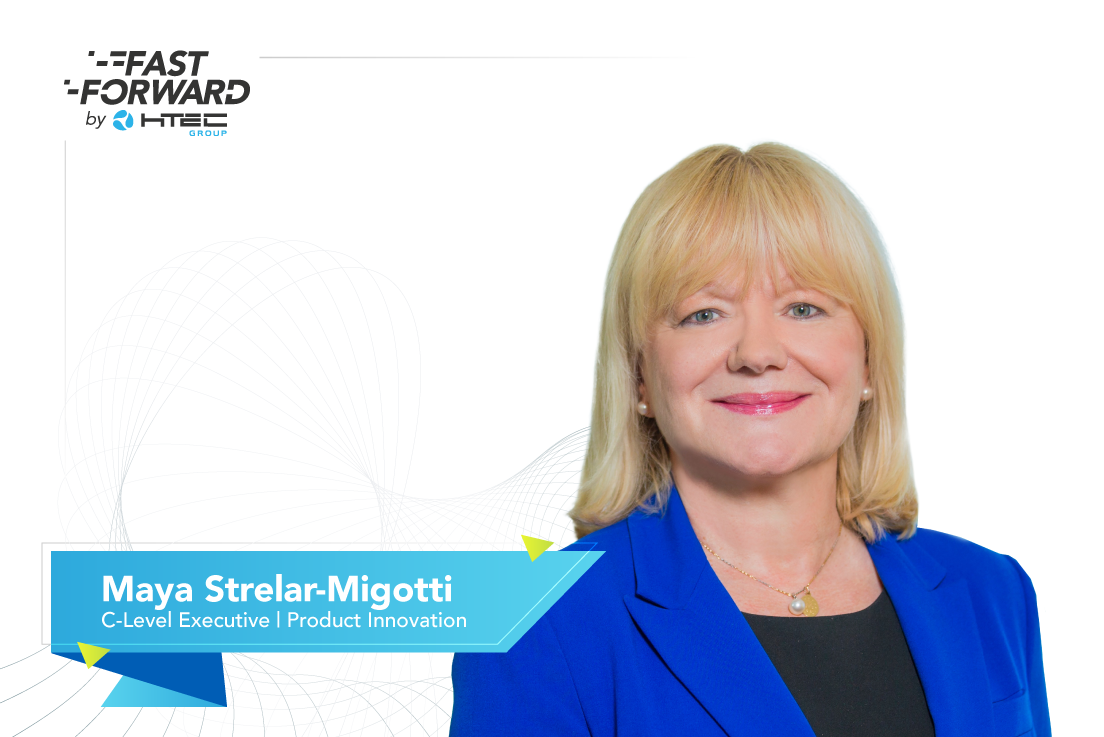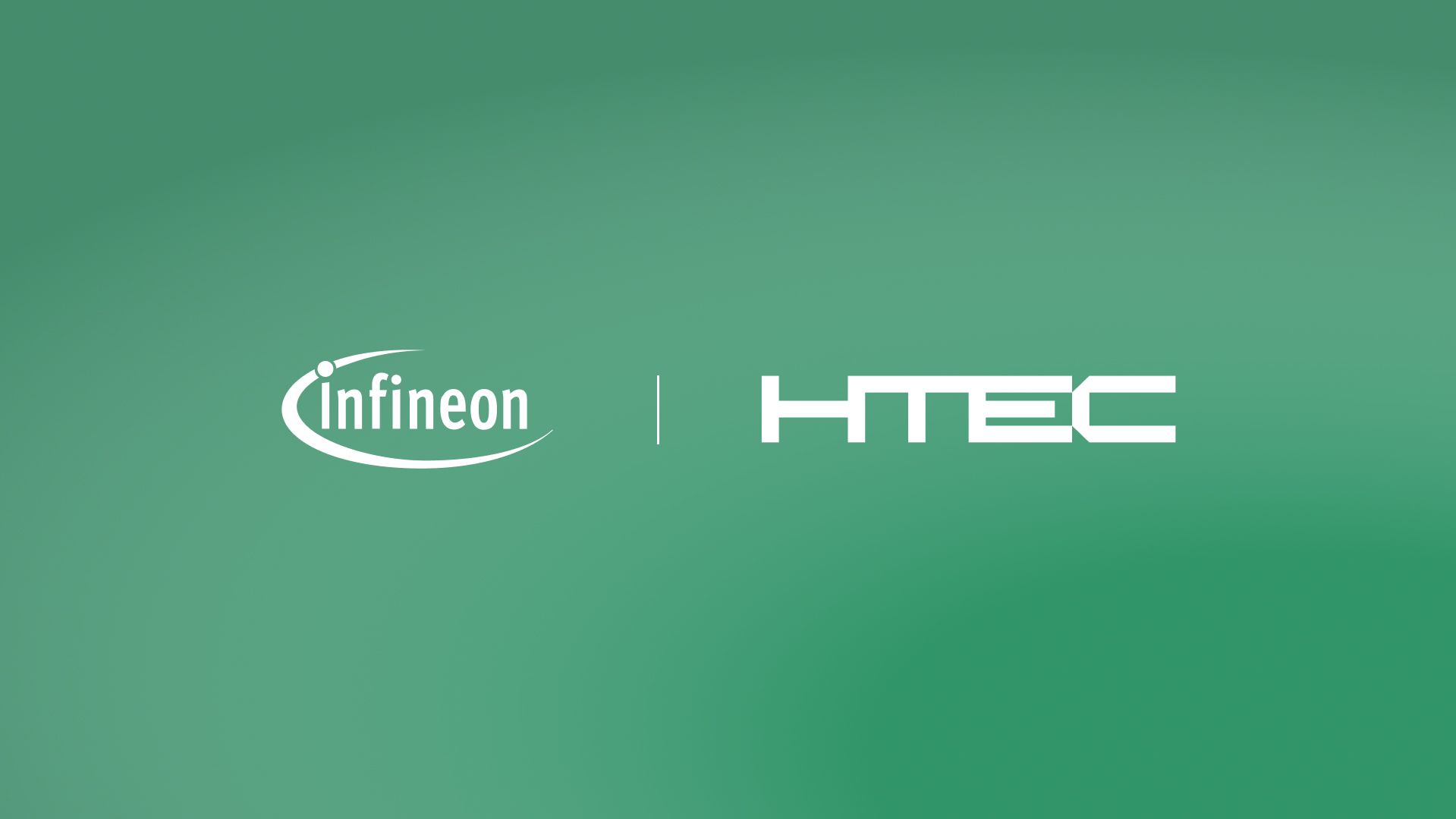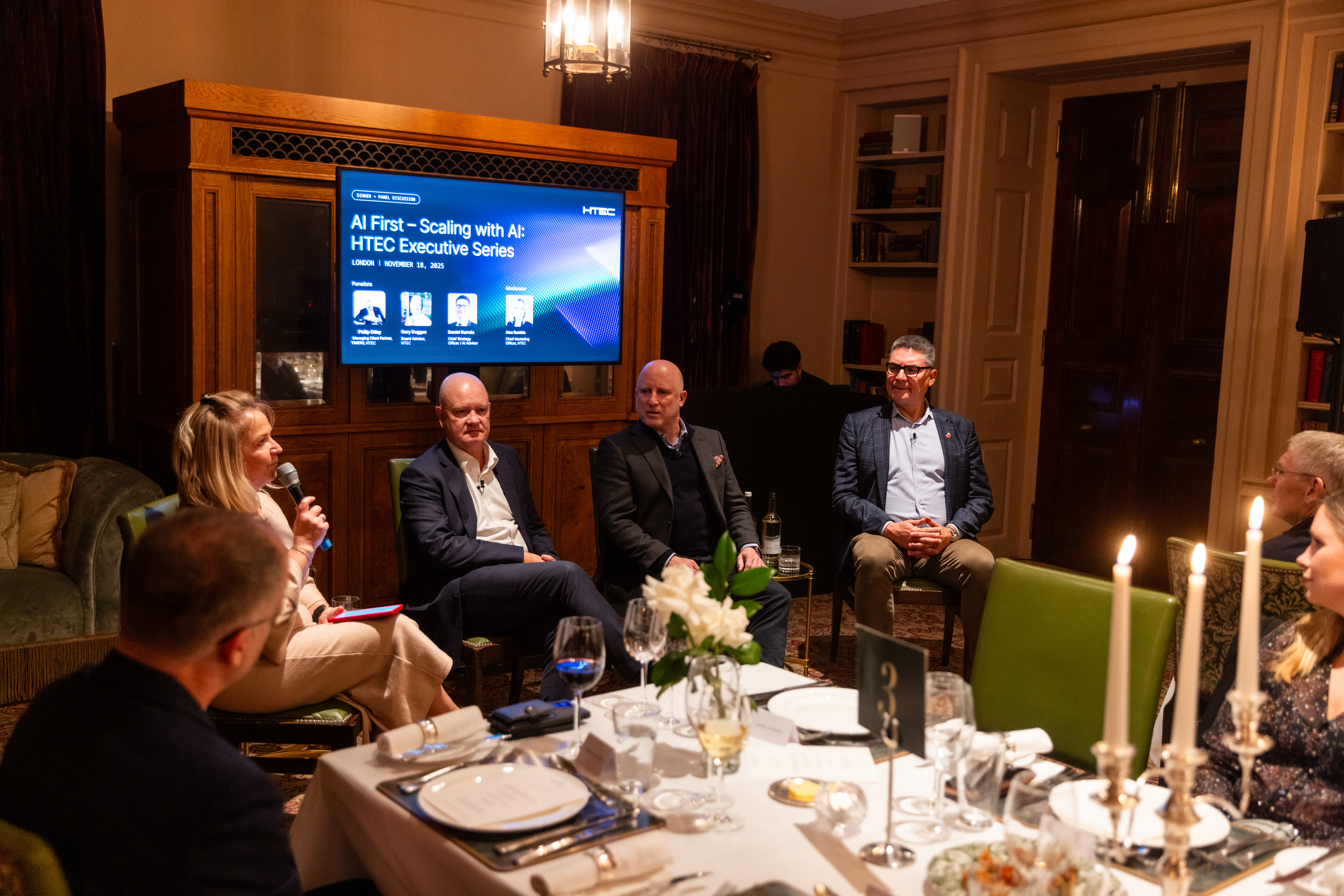“Being a humble leader who is objective towards oneself and always tries to understand how to improve, is critical for success. At the end of the day, you always ask yourself—what was it that I feel good about and what was it that I don’t? This is a crucial part of an internal improvement program.”
— Maya Strelar-Migotti —

Interview with Maya Strelar-Migotti
This is a story about a career path of an extraordinary woman, a world-class leader, a highly accomplished executive, and a mother of two, who has made women’s workplace status one of her lifetime battles.
First, let me remind you that we are living in the 21st century and the concepts of diversity and equality have majorly entered our corporate vernacular and hopefully our workplace culture in practice. Women success stories and “me too” movements are trending in the media calling for society in which both genders, and all those in between, have equal career opportunities and are equally paid without the need to ever compromise with their sexuality. General feeling is that the historical lack of women’s voice is being heard as we move slowly but inevitably towards global women emancipation.
For what was achieved in the area of gender equality in the corporate world, we are to thank, among many brave and intelligent ladies, to our friend and special advisor at HTEC—Maya Strelar-Migotti, with whom we talk about her leadership style,her activism in women business leadership, and the cutting-edge product innovation in large globally distributed teams.
When Maya started her career as a young executive at the Swedish technology company, Ericsson, more than 30 years ago, she was among women pioneers in a predominantly men’s world of semiconductors and telephony. Through hard work and devotion she assumed a number of key leadership positions that had her her live on 4 continents (Europe, Asia, Australia and North America), where she led teams of more than 5 thousand people and developed products for Ericsson’s global customers that served more than 2B end users.
Maya’s success was crowned with these prestigious prizes:
- Bronze Stevie Award, Female Executive of the Year – Computer Hardware, Software & Electronics
- Gold Winner, Women Executive of the Year
- TWIN (Tribute to Women in Industry) Award
- Women of Influence Award
- Portrayed in the book Leading from the Edge by Annmarie Neal
- Women that made their Mark Award
- Most Powerful Women in Swedish Industry, Seven Consecutive Years
- IT & Telecom Star of the Year, Swedish Business Week (2008)
Maya now lives in the United States and still actively supports women in business, mostly through her engagement as a Managing Director of Golden Seeds VC; the CEO of 4PIA, a female-founded startup that she also invested in; and our special advisor at HTEC.
Naturally, one of the main focus areas of our conversation with Maya today is female leadership style and how things have changed for women in tech over the years.
Maya sees California, but also some European countries like Spain, as world leaders in the diversity culture and acceptance of people of all shades and walks of life. She mentions the 2018 California bill which was one of the major steps towards female leadership empowerment on a regulatory level. The bill requires publicly traded companies to have at least one woman on their board of directors making it the first state to install this measure.
With historically the lowest levels of unemployment, U.S. employers are now more than ever open to accepting differences and allowing women into high ranks. Tech industry is leading the openness game, but we see the movement happening all over. One of the latest examples of women power in action are the elections of 2016 when we witnessed the making of history when the people of the United States almost elected their first female president.
Maya suggests that the situation will flip completely in favor of women and other minorities when big money starts talking, when investment funds set the standard of wanting to invest in the companies that have proper gender policies in place.
But, we ask, why do these investment funds want to invest in the open and diverse companies? Surely, it’s not just because they believe in equality, which we know has not quite honestly been the case with big money. Mainly, they invest in the companies which create an environment of trust, diversity and freedom because these companies have a track record of producing better results and show resilience in the long run. Their culture is more stable, their teams more unified. This is what we mean by “when money starts talking it pushes the needle forward”.
Maya has spent most of her career at Ericsson, climbing the ladder of success, holding different managerial, leadership and top product and market development positions which have enabled her to drive innovation throughout the company. I want to find out how easy it was to build, implement and deploy new products and methodologies in the company of Ericsson’s size and history.
According to Maya, the secret for staying relevant throughout decades and different cultures lies in a company’s ability to innovate, especially in adjacent areas, by constantly improving existing products and spreading to new markets. Ericsson tested many different products and approaches until they adopted the most successful one, which was telephony.
To stay innovative, Ericsson has for a long time had an established technology R&D group, which was always well funded, held in high regard, and populated by the best people. Maya shares an anecdote from 1992 about a couple of young guys from their R&D team who were trying to transmit 384 Kbps over a radio channel. In the midst of their hard work, a manager comes by and curiously asks what they are working on, but as soon as they share their excitement with him, he laughs, calling it a complete nonsense that no one will ever need. Well, just think about how many Gbps does an average household download today?
Innovation often lives on the edge of condemnation. It’s a path less traveled. Those companies that leave ample space for their employees to get a little crazy with their vision, those that support the seemingly nonsensical nature of innovation and discovery, stand a better chance of becoming the next industry disruptor. Needless to say that people are more productive when pressure is removed.
It’s important that a company invests in people and ideas which may look impractical and pointless now, but could potentially lead to the next big leap into the future. Innovation needs to be nurtured every day among all employees.
—Maya
When Ericsson decided to establish their presence in Silicon Valley in 2009, Maya was entrusted to lead the company and be the VP of the IP & Broadband Development Unit. At the time, she managed 6K people in 11 countries. Surrounded by Silicon Valley innovation, Maya started thinking about ways to make her teams more innovative. To move forward, she hired a world leader in product design and innovation—IDEO—the company that needs no further introduction and that we at HTEC usually compare ourselves with to some extent, taking an IDEO approach to product design and combining it with deep tech expertise to deliver digital products end to end.
IDEO and Maya’s IP & Broadband team created Innovation Platform under Ericsson Innova Program, which was a platform that set forth the methodology and framework for innovation while allowing freedom for the people to express their creativity and think outside of their daily routine. The ideas were placed in a single collaborative tool and everybody could suggest and develop those ideas.
The idea could have come from one person but could have been developed by many.
The best and the most complete ideas were brought to the council which would decide in which ideas to invest further. If the idea lived to be a great success internally, then it would be brought to a Product Manager and implemented into the product to be used by end users.
This innovation framework showed outstanding results and was recognized by Harvard University, where it was used as an example of successful innovation implementation practice within large teams and multinational companies.
It took them about a year to implement the Innovation Platform with around 20K people involved in the U.S., parts of China and Europe. They were trained in a series of organized workshops in design thinking methodology and prototype-driven innovation process. Unfortunately, the project was not endorsed by the top management of the company “because any company which is not based in Silicon Valley has a slight rejection towards what comes from Silicon Valley, no matter whether they are Swedish, Japanese, or German”—Maya remarks with a tint of bitterness in her voice. Many currents undermined this innovation movement because the mothership held a lot of pride in their 140+ years of experience and preferred to ignore the new tricks even thought the results spoke in their favor.
Maya was the starter and the catalyst of the project, and after IDEO prepared the grounds for the Innovation Platform to be scaled, she hired an Innovation Director and a team of 5 designers who were: “tasked with spreading the innovation methodology across the organization and fight with everybody else about the budget, of course”.
I find Maya’s observation about the reluctance of overseas companies to accept what comes from Silicon Valley interesting so I inquire why she thought Silicon Valley was such a leader in innovation. Maya answers right off the bat—money! It’s the capital that attracts top talent from all over the world and concentrates it in the Valley. But, we must not forget the invincible open-mindedness and free spirit of the people living here, the idea world which started the whole tech thing, to begin with. The pillar of such a thriving tech economy in the Bay Area is an established and well-oiled entrepreneurial and regulatory system that supports, nurtures and invests in startup culture, new businesses, and technology. Silicon Valley has set a new paradigm and expectations in the development speed and nimbleness of a business venture. Innovation is all about people empowerment and openness to ideas, going beyond the comfort zone, daring for Mars, if you wish. Really, anything is possible if you can inspire people to invest in your idea.
Speaking about startups and investments, I ask Maya to tell us a bit about her engagement with Golden Seeds, which is a group of angel investors, but also a venture fund that invests only in companies with women founders, CEOs, or in which women own a certain percentage of the company. In her own words, Maya joined Golden Seeds because the projects these ladies work on are more deeply aligned with her heart. The reason behind this is that women are more focused on solving visible, practical problems through their startups and technology. Men are more technical, more metaphysical, more ego, if you will.
When you invest in a startup you have to expect that 9 out of 10 you are going to lose money, so I said to myself—if I have to lose my money, I better lose it with heart.
When asked about her career, Maya surprises me with her answer. Her dream was to become an astronomer, so she observes that her life did not turn out quite as she had planned. “We make plans, but God laughs. What matters”, Maya explains, “is your style, how you lead your life. Every day you do the best you can and when life opens a door for you, you go through it.”
Being a humble leader who is critical towards oneself and always tries to understand how to improve is critical for success. At the end of the day, you always ask yourself—what was it that I feel good about and what was it that I don’t? This is a crucial part of an internal improvement program.
Michael C. Bush, the CEO of Great Place to Work, also singled out self-awareness and being open to continuous learning as the crucial traits of a successful leader in our first FastForward interview.
Aside from leadership and innovation, what comes up in all our FastForward conversations is the question of AI. What we have noticed continuously with the people we interview, who are deeply involved in technology development and innovation, is that not even they are able to give predictions, especially not overly positive ones, about the implications of this humanoid technology. Our anxiety comes from the lack of control, transparency and regulations over the human-robot brain interplay and the power it unleashes.
The 5th Industrial Revolution, the era of robots and AI, is here and, as history teaches us, every industrial revolution brings turmoil, severe recessions, crisis and job losses. Once again, machines are coming for our jobs.
Maya admits that she doesn’t feel particularly positive about AI. According to her, it has already brought substantial harm: “Take the example of deepfakes—Facebook and Cambridge Analytica scandals. One of the greatest challenges of society going forward will be what to believe in and what the truth is. Nothing is certain anymore.”
Speaking of AI, we touch base on the Blockchain-based AI-driven predictive analytics woman-founded company, 4PIA, in which Maya took the CEO role to help the team move forward. The company is in the business of social listening, mainly on Twitter, where they track and analyze how people feel and react to the US political situation on a daily basis, by following the tweets of the president, the members of the Senate and the Congress. Twitter data and user votes are collected and AI-analyzed on 4PIA platform to reveal genuine public sentiment.
→ Head out to www.4pia.com and find an amazing overview of real-time trending events and tweet ratings of the president Trump, other politicians, and presidential candidates.
Going back to more personal topics, I am curious to understand what were the passions that drove Maya to achieve so much and become the award-winning female leader.
Perfectionist and overachiever by nature, driven by the feeling of achievement and accomplishment.
Perseverance and determination in the face of adversity. “People, especially men, have always stood in my way.”—Maya remarks. “Often times, they did not believe in my capabilities and intelligence, but I never lost my way and always kept going forward.” Through hardship to stars!
The passion for helping other women have an easier path to success. She started mentoring women in Sweden and continued to do so in the U.S. where she established women leadership group at Ericsson which not only attracted the employees of Ericsson, but also the women from neighbouring companies like Skylinks, Citrix and others, who were interested in building relationships and supporting each other. It was among the first women-only groups of this kind in the Bay Area. Nowadays, Maya is an active member of the Watermark organization and International Women’s Forum where she gives lectures and organizes workshops to prepare women for corporate America. She has many recognitions in the area of women leadership and expresses deep satisfaction with how much was achieved in the last 10 years all over the world. I am deeply thankful to Maya for being the force of change and for helping the transformation of a workplace into a more fair and diversified environment.
In the end, we like to hear why did Maya join HTEC’s advisory board and what she expects from working with us. Since we take this as a testimonial for our work, I will quote Maya’s own words here.
“I felt quite honored when Alex (our CEO) asked me to join the team because I think that people at HTEC are brilliant and the company is led by the committed and strong leader who behaves as I behaved in my career—never giving up, always doing his best, and when he gets a setback just brushes off his knees and goes forward. So, I saw a lot of my personal individual values in Alex and the rest of the team I met. Another thing is that I believe in companies like HTEC that are bringing big business to a small country like Serbia, providing opportunities to the young and intelligent people to work on challenging and innovative projects and develop professionally. I believe that HTEC is well positioned to become very strong because digitalization is happening and there’s a huge demand for their expertize. But, the most important thing about the people, aside from the fact that they are great engineers and shrewd entrepreneurs, is their passion and stubbornness to do things right.”
Maya, you are spot on about the stubbornness and passion we bring to work and we thank you for the rest of the credits given above. HTEC strongly believes that diversified environments and cultures make bigger impact, that diversified teams drive innovation and productivity, and that women, especially moms in our team, bring tons of energy along with proven commitment and devotion. We will be working hard in the coming period to increase the number of women in our leadership team and further increase the benefits offered to women employees and new moms among them.
As one of the steps towards this goal, we have recently introduced unprecedented benefits for new moms at HTEC. Not only do they enjoy the standard 12 months of full-time paid leave, but also when this period is over, during the following 3 months they only work 6 hours per day for a full-time salary. 25% of our employees are female, which is a fairly high number for a tech company. As we said earlier, we are committed to reaching the perfect equilibrium in the years to come.
Shout out to all the ladies out there who are working hard to make their dreams come true!




